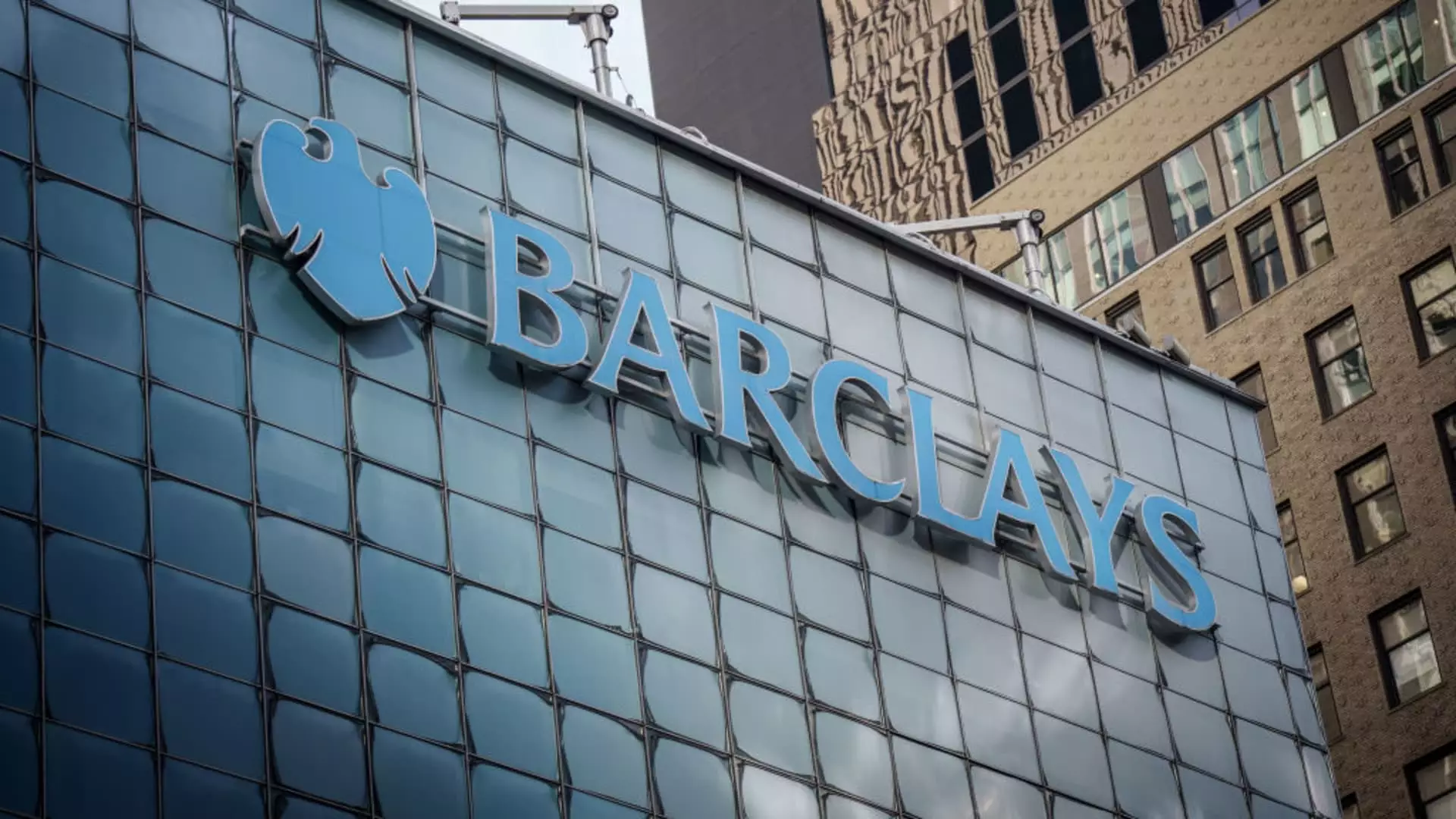In a striking demonstration of resilience, Barclays has shown promising performance in its latest financial results, indicating its ability to navigate through turbulent market conditions. The British bank reported a pre-tax profit of £2.7 billion ($3.6 billion) for the first quarter of 2024, representing an impressive 11% year-on-year increase. This exceeded analyst expectations of £2.49 billion, showcasing not only the bank’s prowess in maintaining profitability but also its strategic acumen in leveraging favorable market conditions. With group revenues reaching £7.7 billion, Barclays has outstripped the projected £7.33 billion, further cementing its status as a formidable player in the global banking sector.
Central to this positive performance is Barclays’ investment banking division, which remains its most lucrative offering. The unit saw a notable 16% rise in income, totaling £3.87 billion—a clear testament to the bank’s capacity to thrive even in a climate characterized by market fluctuations. This sharp increase points to both robust trading activities and the bank’s competency in risk management, aspects that are crucial in today’s economically uncertain landscape.
Navigating U.S. Exposure and Trade Challenges
The bank’s substantial exposure to the U.S. market presents a double-edged sword, particularly in light of the ongoing impacts of geopolitical tensions stemming from trade policies. As highlighted by Barclays CEO C.S. Venkatakrishnan, the looming uncertainty in economic decision-making—exacerbated by the volatile environment created by U.S. trade tariffs—poses risks. Nevertheless, he remains optimistic about the ability of Barclays to adapt, suggesting that increased market volatility can also be a profitable avenue for client service and institutional growth.
Venkatakrishnan’s acknowledgment of economic unpredictability reflects an acute awareness of external pressures impacting financial decision-making. His approach indicates a proactive strategy wherein Barclays strives to remain agile, preparing for various scenarios that could unfold as global economic conditions fluctuate. The CEO’s insights underscore that while economic stability is paramount, flexibility and adaptability will be crucial in steering through potential downturns.
A Focus on Domestic Strengths
Within the UK, Barclays appears to have solidified its position, particularly following strategic moves such as its acquisition of Tesco Bank, which has bolstered its consumer banking segment. A remarkable 12% rise in income from this division, alongside a 23% increase in pre-tax profits, signals a robust operational performance that stands in stark contrast to challenges faced by other institutions. As global banks like HSBC announce major reductions in their operational footprints, including winding down businesses in critical financial sectors, Barclays remains vibrant in a domestic environment that is persistently shifting.
Interestingly, with 2024’s first-quarter results revealing a marked improvement in the U.S. consumer banking unit—returning 9.1% on tangible equity compared to 4.1% in the previous year—Barclays showcases its ability to strategically nurture its operations across key geographies. Although the profit before tax in this division saw a 7% decline, the overall growth hints at an underlying strength that suggests potential for recovery and advancement.
Future Outlook and Global Economic Implications
As the UK navigates its post-Brexit reality, the potential for economic gain appears palpable, largely due to newly redefined trade relationships with the U.S. This is especially significant considering the 20% reciprocal tariffs impacting the EU, which have been temporarily suspended, creating an opportunity for London to enhance its position in transatlantic trades. This shift could play a crucial role in shaping Barclays’ strategy as it looks to harness favorable conditions to secure advantageous commercial arrangements.
However, while optimism is warranted, caution is essential. The broader context of global economic slowdown continues to loom large, possibly creating headwinds that will influence Barclays’ trajectory. The banking sector at large may experience turbulence as institutions recalibrate their operational strategies amid evolving market demands and regulatory environments.
In juxtaposition to the notable advances made by Barclays, the problems faced by European banks, including job cuts and downsizing, signify a looming structural issue within the banking sector. The ever-evolving landscape necessitates not only an acute awareness of competitive dynamics but also an innovative approach to service offerings and operational efficiency.
Barclays’ recent performance stands as a testament to its strategic resilience and operational adaptability, elements that will be indispensable as the bank continues to forge its path through a landscape filled with uncertainty and opportunity. The real measure will lie in how effectively Barclays can leverage its market position and lessons learned amidst volatility to sustain growth in the face of potential economic challenges ahead.

